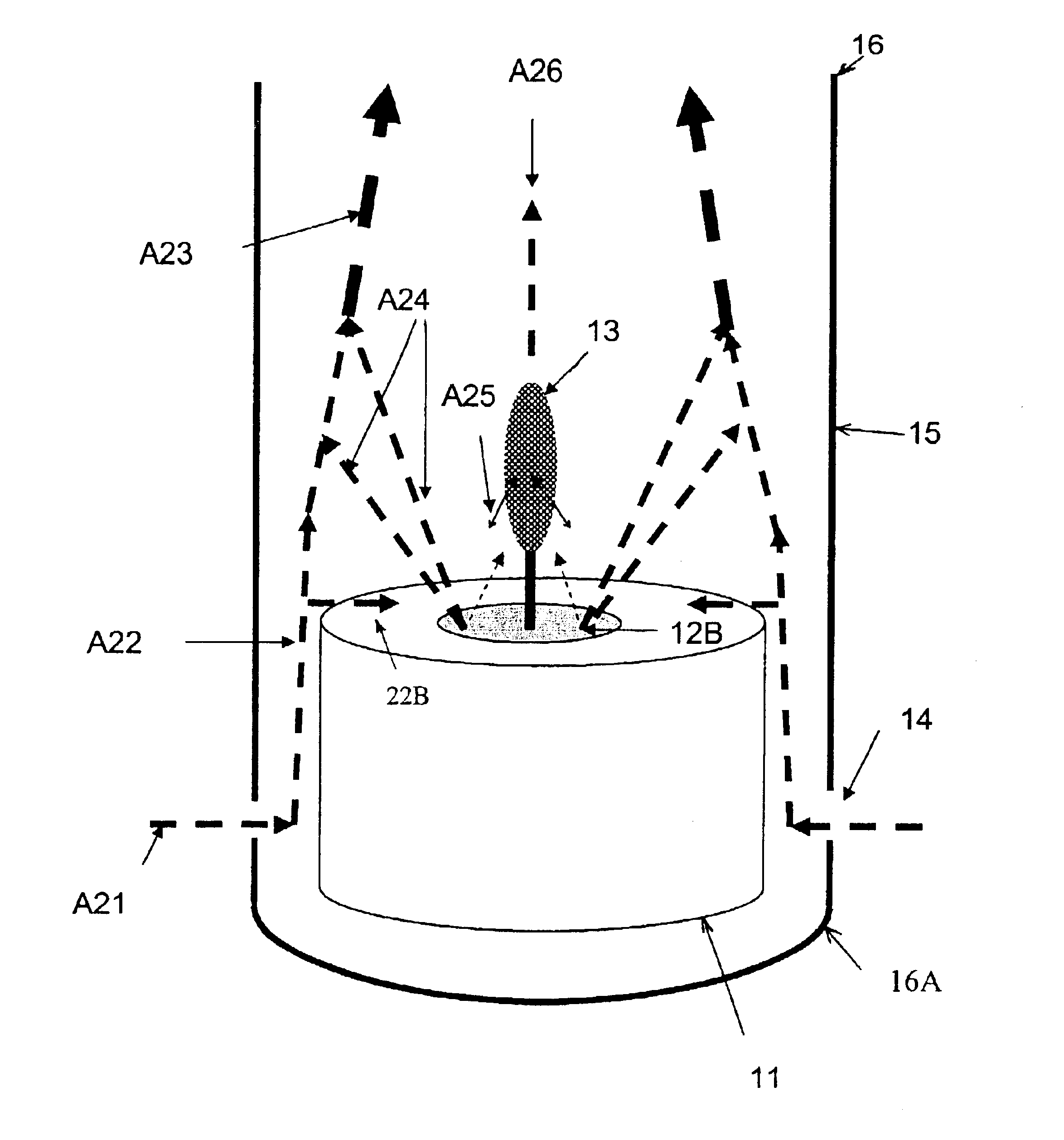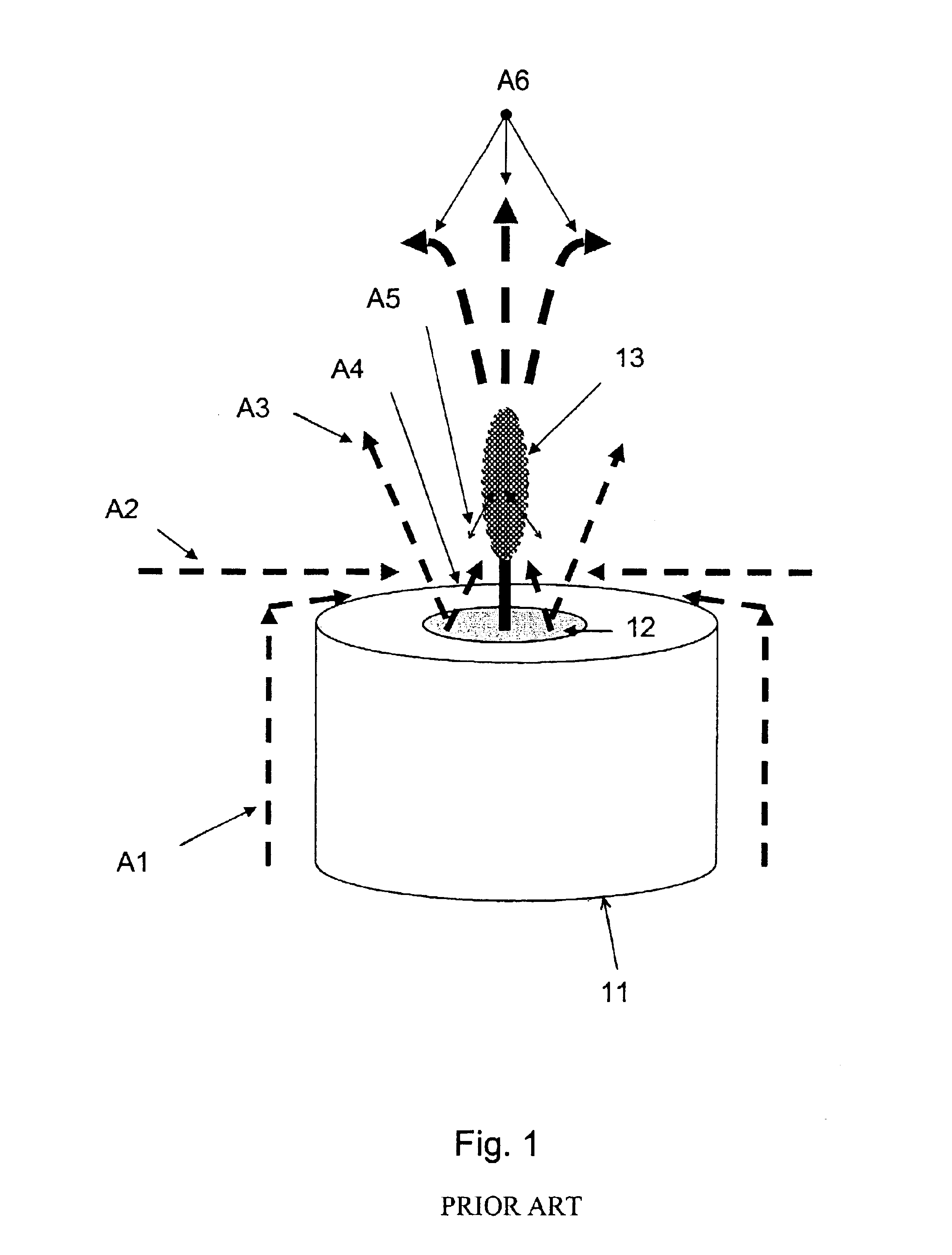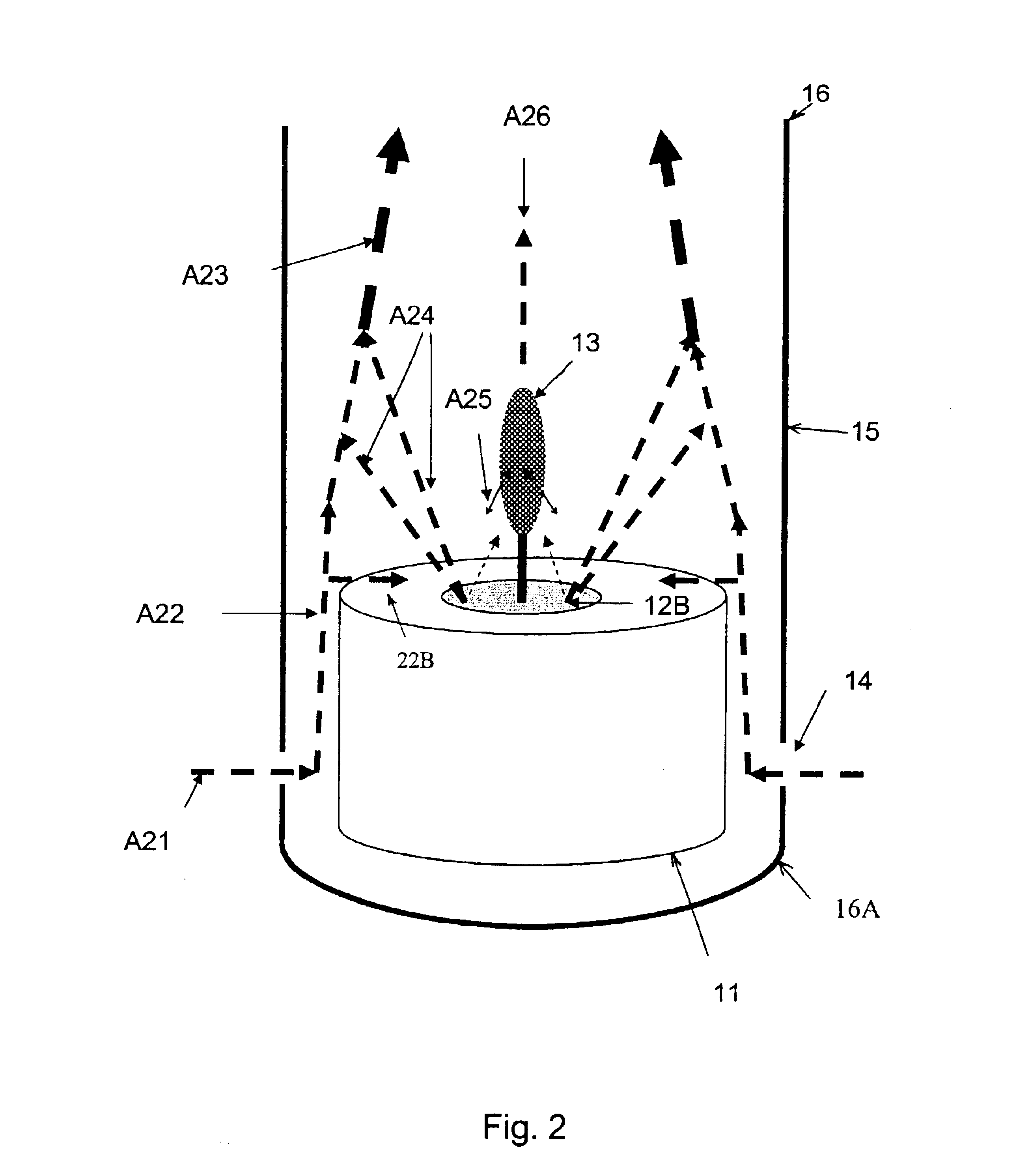Method for improving the delivery of volatiles from a burning candle and a system for the same
a technology for volatiles and burning candles, applied in the direction of burners, diseases, combustion types, etc., can solve the problems of inability to meet the needs of users, so as to improve the delivery of volatiles
- Summary
- Abstract
- Description
- Claims
- Application Information
AI Technical Summary
Benefits of technology
Problems solved by technology
Method used
Image
Examples
experiment 2
Again, commercial candles (Glade, berry-scent, SC Johnson & Sons., Inc. Racine, Wis.)) were purchased and trained panelists evaluated the volatile (fragrance) performance and an expert perfumer gave volatile (fragrance) descriptions. In this experiment, the scent is the volatile.
Three types of tubes were used as chimneys in conjunction with a base formed as base 65B. Tube type D was 16 cm in height and 10 cm in diameter. Tube type E was 23 cm in height and 10 cm in diameter. Tube type F was 19 cm in height and 13 cm in diameter. Each of the tubes was made of quartz (Pyrex). A measure of the air flow rate in each test was performed using a commercial smoke device positioned adjacent inlet passages 64B, and qualitative measurements were taken. The respective tube aspect ratios (height / bottom diameter) are: Tube D (16 cm / 10 cm)=1.60, Tube E (23 cm / 10 cm)=2.30, Tube F (19 cm / 13 cm)=1.46. The results are shown below in Table II:
TABLE IIType oftube / chimneySmokePerformanceWithout ChimneyRa...
PUM
 Login to View More
Login to View More Abstract
Description
Claims
Application Information
 Login to View More
Login to View More - R&D
- Intellectual Property
- Life Sciences
- Materials
- Tech Scout
- Unparalleled Data Quality
- Higher Quality Content
- 60% Fewer Hallucinations
Browse by: Latest US Patents, China's latest patents, Technical Efficacy Thesaurus, Application Domain, Technology Topic, Popular Technical Reports.
© 2025 PatSnap. All rights reserved.Legal|Privacy policy|Modern Slavery Act Transparency Statement|Sitemap|About US| Contact US: help@patsnap.com



